Damaging 120km/h wind gusts were already developing between Moreton Island and Byron Bay on Thursday night, potentially 24 hours or more before the historic storm’s predicted landfall.
Thousands of people in Lismore and other flood-prone parts of Northern NSW were ordered to evacuate amid forecasts flooding would cut off their escape routes.
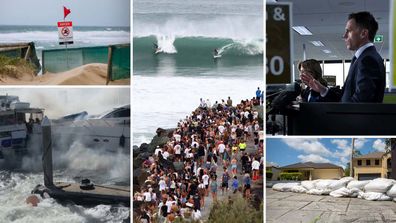
In Pictures: Cyclone Alfred spotted from space as it approaches Queensland coast
NSW Premier Chris Minns said there may not be enough boats for every house in the flood evacuation zone if they remain.
“Those communities, if they remain in the area, they become trapped, they may be without power, water and other essential services for an extended period of time,” he said.
“We’re forecasting very heavy rain and, in the event of that, evacuation routes may be closed.”
At 7pm (8pm AEDT) Alfred was 225 kilometres east of Brisbane and crawling west, north-west at just 6km/h.
Its slow pace, coupled with some unexpected U-turns further out to sea, blew out forecasters’ predictions about landfall for the southernmost cyclone to hit Australia in 50 years.
The Bureau of Meteorology said it was expected to cross the coast Friday night or even early Saturday morning, as a weakened category 1, but destructive 155km/h winds would be felt near the core throughout Friday.
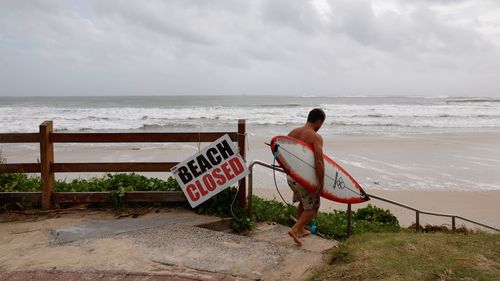
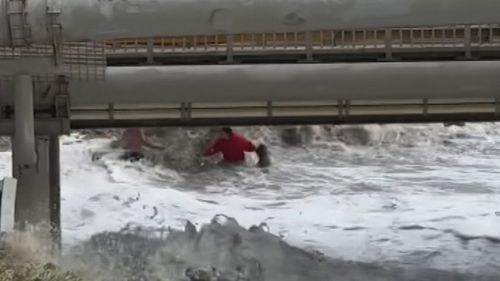
Concerns will then immediately turn to clean-up and flooding, with daily rainfall of 350 to 450 millimetres predicted near and south of the core.
By 9.30pm on Thursday, more than 25,000 people were out power, with more expected to follow, from the southern Moreton Bay islands south past Port Macquarie in NSW.
The Gold Coast, particularly Coolangatta, were the worst hit in Queensland, with Cabarita Beach, Broken head and several suburbs inland of Tweed Heads among the worst affected south of the border.
Queensland Premier David Crisafulli said the impact would be felt by everyone in the south-east in some way.
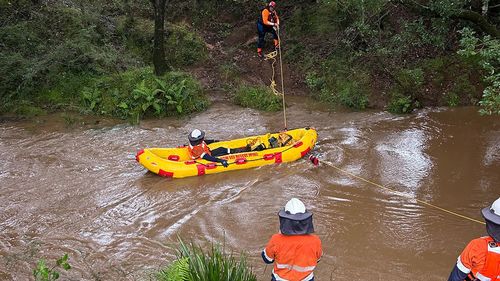
“Everyone will have some level of impact but I really believe that people have overwhelmingly done the little things right,” he said.
“I know we spent a lot of time preparing. We’ve prepositioned everything from generators to staff and I think Queenslanders have responded really, really well.
“I’ve got every faith we’ll get through this if we just stay connected, keep doing the right things and we’ll come through the other end.”
More than 1000 schools were closed on Thursday and into Friday public transport was cancelled across south-east Queensland.

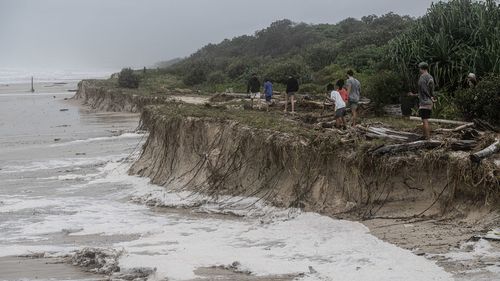
The last passenger flight into Brisbane arrived at 3.35pm, with no timetable for flights to resume.
The plane was due to land in Toowoomba, leaving players and staff to take a bus back to their families in the capital.
Earlier on Thursday, Gold Coasters given the day off school flocked to the beach to watch surfers assisted with jet skis try their luck with massive barrelling waves on what turned out to be an otherwise fairly calm morning on land.
The crowds and daredevils sparked a warning from police of $16,000 fines for anyone who refused to get out of the ocean.
Footage of residents struggling in water emerged after the region saw tidal surges from cyclonic winds.
Lifesavers this morning witnessed a “large number of near misses” where people standing close to the shore were forced to flee from a rush of water sweeping in, Surf Life Saving Queensland lifesaving services manager Natalie Edwards said.







